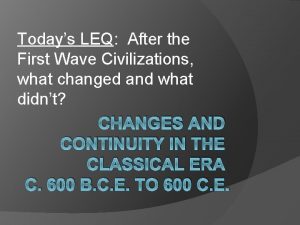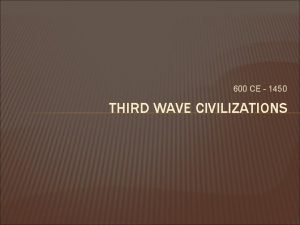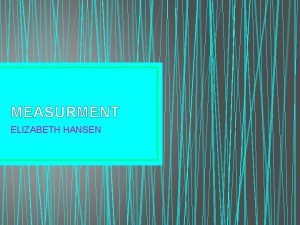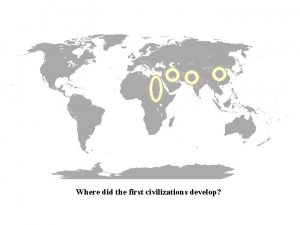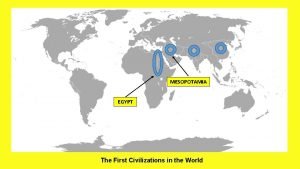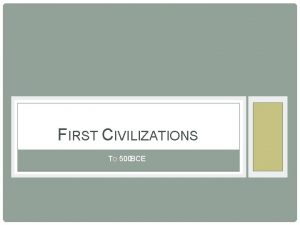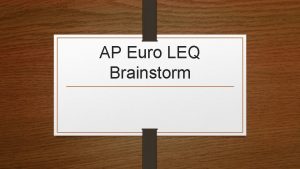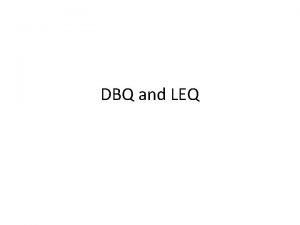Todays LEQ After the First Wave Civilizations what








- Slides: 8

Today’s LEQ: After the First Wave Civilizations, what changed and what didn’t? CHANGES AND CONTINUITY IN THE CLASSICAL ERA C. 600 B. C. E. TO 600 C. E.

First Wave Civilizations � Emerged from about c. 3500 B. C. E. � Generated the most impressive and powerful human societies created thus far � But, proved to be fragile and vulnerable as well � Even though “first wavers” broke down, there was no going back – Civilization, as a form of human community stuck around

Second Wave Civilizations �New or enlarged urban-centered, state-based societies emerged to replace first wavers – EMPIRES!!! �i. e. Persia, Greece, Rome, Han-China, etc. �Many eventually perished and were replaced by “third wavers” �i. e. the collapse of Rome

Continuities in Civilization � Same pattern of “rise, expand, collapse” � Monarchs continued to rule � Patriarchy persisted � Sharp divide between elite and everyone else � Practice of slavery stayed � No major technological or economic breakthroughs leading to new kinds of human societies

Changes in Civilization � � � Population grew more rapidly than ever before (rate of growth is quite slow compared to recenturies) Growing size of states & empires dwarfed first wave civilizations; brought together vast diversity of people under a single political system Rise and fall of second wave empires had major consequences and changes for the people who experienced them; oftentimes results in bloodshed, destruction, and trauma Modest innovations enhanced human potential for manipulating the environment Far more elaborate, widespread, and dense networks of communication and trade


Distinctive “Wisdom Traditions” Develop All have provided moral and spiritual framework within which most of the world’s peoples have sought to order their lives and define their relationship to the mysteries of life and death � All are the product of second and third-wave civilizations � �The great philosophical/religious systems of Legalism, Confucianism, and Daoism in China �Hinduism and Buddhism in India �Greek rationalism in the Mediterranean �Judaism, Zoroastrianism, Christianity, and Islam in the Middle East

Links to Today � Current identities of entire countries, regions, and civilizations still linked to the achievements of the classical era
